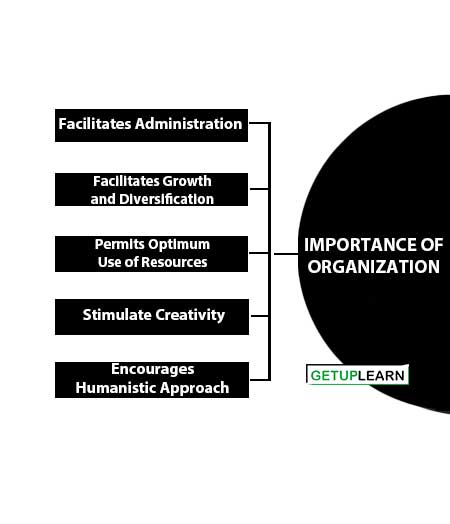Organization is a consciously coordinated social entity, with a relatively identifiable boundary, that functions on a relatively continuous basis to achieve a common goal or set of goals. Thus, it can be concluded that an organization is an economic and social entity in which a number of persons perform tasks to achieve a predetermined.
This helps them to accomplish personal goals- like socio-economic satisfaction which they cannot achieve alone. Similarly, it is a system of clearly defined structures of activities consciously designed to allow organizational participants to work effectively toward a common goal.
Table of Contents
Features of Organization
The features of an organization are as follows:
- Group of People
- Division of Work
- Common Purpose
- Vertical and Horizontal Relationships
- Chain of Command
- Dynamics of Organization
Group of People
An organization comes into existence when a group of people combine their efforts for some common purpose and willingly contribute towards their common endeavor.
Division of Work
Setting of an organization involves division of the total work into various activities and functions, and assigning the tasks to different persons according to their skill, ability, and experience.
Common Purpose
Every organization comes into existence on the basis of the goals of the enterprise which are separate from the personal goals of the people employed. It is the common purpose of the organization which provides, the basis of cooperation among the members of the organization.
Vertical and Horizontal Relationships
An organization creates cooperative relationships between different departments and divisions as well as between superiors and subordinates. Different functions and activities like production, marketing, financing, etc. are integrated for the achievement of proper coordination.
The duties and responsibilities of superiors and subordinates in each department or division are also unified so as to serve the purpose of their joint efforts.
Chain of Command
The superior-subordinate relationships established in an organization are based on the authority that flows from the higher levels of management to the next lower levels, thereby forming a hierarchical chain. This is known as the chain of command, which, also determines the line of communication.
Dynamics of Organization
Besides the structural relationships among people which are based on their activities and functions, there exists an Organising interaction based on sentiments, attitudes, and behavior of individuals and groups.
These aspects of the relationship provide a dynamic element to organizational functioning. They are subject to change from time to time.
Importance of Organization
The sound organization contributes greatly to the continuity and success of the enterprise. These are the importance of organization:
- Facilitates Administration
- Facilitates Growth and Diversification
- Permits Optimum Use of Resources
- Stimulate Creativity
- Encourages Humanistic Approach
Facilitates Administration
A sound organization facilitates management to relate resource flows continually to overall objectives. It provides an appropriate platform from where management can perform the functions of planning, direction coordination, motivation, and control.
Facilitates Growth and Diversification
It helps in organizational elaboration, growth, and diversification of activities facilitated by a clear division of work, proper delegation of authority, etc. As the organization expands to a reasonable proportion the functional types can be replaced by a more flexible decentralized organization.
Permits Optimum Use of Resources
A sound organization permits optimum use of technical and human resources. The organization can incorporate the latest technological improvements like computers, electronic data processing machines, etc. It permits the optimum use of human efforts through specialization.
It also develops people by creating appropriate training and promotion opportunities. This organization gives a company the greatest possible strength for meeting predicted needs and changing conditions.
Stimulate Creativity
The specialization provides individuals with well-defined duties, and clear lines of authority, and responsibility. Sound organization structure enables managers to turn over routine and repetitive jobs to supporting positions and concentrate on important issues where they can exploit their potential better. Thus, it encourages the creativity of the people.
Encourages Humanistic Approach
People can work in a team and not like robots or machines. The organization provides job rotation, job enlargement, and enrichment Jobs are designed to suit human needs and are made meaningful and interesting.
Organizations adopt efficient methods of selection, training, remuneration, proper delegation and decentralization, a conducive working environment, and democratic and participative leadership which provide higher job satisfaction to the employees. It enhances the interaction among different levels of management.
FAQs About the Features of Organization
What are the features of organization?
Group of People, Division of Work, Common Purpose, Vertical and Horizontal Relationships, Chain of Command, and Dynamics of Organization, are the features of organization.
What is the importance of organization?
The importance of organization is for the following reasons:
1. Facilitates Administration
2. Facilitates Growth and Diversification
3. Permits Optimum Use of Resources
4. Stimulate Creativity
5. Encourages Humanistic Approach.


